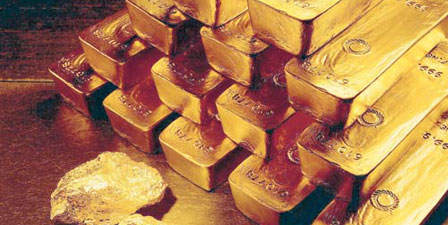The gold price seems to have been slowly but relentlessly sliding since it peaked at $1,920 in September 2011. This has been the strongest of the four corrections in the soaring bull market that began 12 years ago, with a fall of about 13 per cent.
What’s going on? And what can we expect to happen to the price?
The main cause appears to be a weakening in investor and consumer demand, magnified by selling by speculators, particularly hedge funds.
Economic slowdown in India and China, which together account for half global demand for gold, has discouraged individual investors. In India there has been the additional negative factor of a weak currency. The rupee has lost a fifth of its purchasing power in dollar terms over the past 12 months.
However, economic growth is picking up again in China, while in India inflation has fallen to its lowest level in three years, suggesting there is now greater potential for the central bank to stimulate the economy.
Things have started to look better in India since prime minister Manmohan Singh abandoned his socialist coalition partners and resumed pursuit of policies designed to improve the efficiency of the economy. The new finance minister says he plans to cut the fiscal deficit from 5.3 per cent of GDP this year to 3 per cent in 2017, the committee to fast-track much-needed infrastructural investment is now operational, and the important cuts in energy subsidies has begun. The rupee has stopped falling.
Investors like all this. The Mumbai stock market has been soaring over the past six months.
There is an intriguing correlation between the gold price and the Indian bourse. Which should not be a surprise, seeing that Indians are such important buyers of the yellow metal. And their buying is volatile, thus having a disproportionate impact on price trends.
In the current cycle, the Mumbai stock market peaked in November 2010. Ten months later the gold price peaked and began to track Indian equities on the way down.
India’s Sensex index lost 20 per cent before it bottomed a year ago, although it flattened out somewhat earlier, in August 2011. Gold flattened out in June last year – also just ten months after Indian equities did so.
If that correlation is not mere coincidence, and if Mumbai continues to rise harply as it has been doing, reflecting growing confidence by wealthy Indians in investment assets generally, then the gold price should be near or already past its low in the current cycle. There may be one more leg down, perhaps to a level close to $1,600. Or perhaps not.
Technical analysis supports the probability that gold has established a base from which it could rise strongly. The Mumbai correlation suggests we could see take-off soon, probably in the March-to-May period.
Gold imports into India fell by a third last year because of a combination of economic slowdown and weakness in the national currency, which raised the price by about 50 per cent in rupee terms. (Whereas Americans and Europeans tend to buy gold when its price is rising, Asians tend to hold back, or even sell, as they see the metal become more expensive).
If the rupee continues to strengthen it will make make gold look a better buy to Indian investors. With an improving environment for gold demand in India, and continuing growth in China, now the world’s biggest market for gold, current conditions favour the metal.
Analysts polled by the London Bullion Market Association expect on average an increase of about 5 per cent in dollar terms this year – a view conservative enough to be entirely credible.
The longer-term positive fundamentals for gold also remain in place:
- Central banks continue to flood the world with money and nearly-free credit, with highly favourable consequences for most investment assets.
There is no significant evidence of any early intention to curb these easy-money policies.
Markets were surprised by the revelation that some of the governors of the US Federal Reserve have grown cautious. But as Asia-based strategist Christopher Wood points out: “The only three Fed governors that matter” are the chairman, Ben Bernanke, his deputy Janet Yellen and New York Fed president William Dudley – “they are all in the super-dovish camp.”
CopyRight – OnTarget 2013 by Martin Spring







